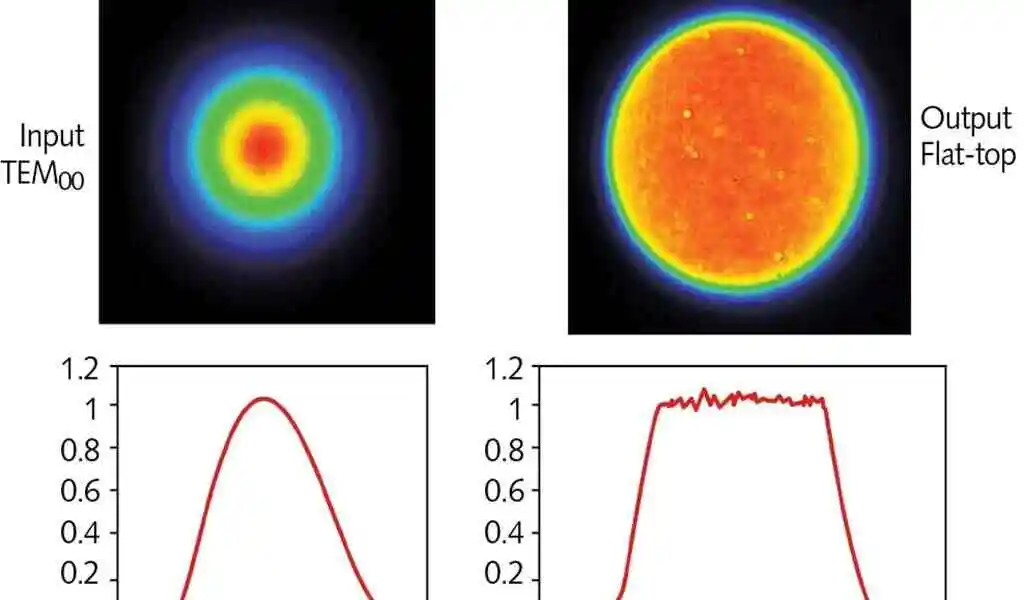Tech
Flat Top Beam

Flat Top Beams are beams with a radiance profile that is characterised by an area of uniform energy surrounded by edges along which the radiance falls abruptly. The plateau of constant energy is then said to be well-bounded. This is in stark contrast to the more commonly found type of beams which are referred to as Gaussian beams. Gaussian beams are characterised by a peak at the centre and then the radiance falls slowly and smoothly in an asymptotic way. Gaussian beams are thus regarded as unbounded and, according to the theory behind them, they expand with no limits.
The interest in Gaussian beams lies in the fact that the vast majority of laser systems can be described as having a Gaussian beam profile or something that closely resembles it. But on the other hand, a Gaussian beam is not the best choice from a practical point of view. The issue with Gaussian beams is that the area being treated or illuminated is not uniform and there is always a finite amount of light leaking outside of it. Hence, the Flat Top Beam is a much better option.
Contrary to the case of Gaussian beams, a Flat Top Beam does not occur naturally. That is to say that the beam emerging from a laser cavity is rarely a Flat Top beam. For this reason, extra components have to be positioned along the optical path in order to obtain a Flat Top beam.
If one is interested in achieving a collimated flat-top profile, i.e flat intensity and phase, the way to achieve this is the inclusion of a pair of special components arranged in such a way that they form a kind of telescope. The first component generates a flat top at a given size and focuses it on the second component, which is a special aspherical collimator that makes the phase of the beam flat. These components can be diffractive or refractive free-forms.
Although the telescope approach is efficient and offers good throughput, it does occupy a considerable amount of space, needs to be imaged down at high ratios for small top-hats shapes (requiring even more space, often many metres) and is not versatile. A more practical way of attaining a Flat Top beam from a Gaussian beam, or from any other type of beam for that matter, is to use a single diffractive optical element to generate a top-hat beam only at the focus of the system (or the far-field) . A diffractive optical element is a discretized optical window-like element that modulates the wavefront of an incoming beam. Then by means of diffraction, which is a wave interference effect, a Flat Top beam emerges at the output plane. The final shape of the area with constant radiance is not constrained to a circle. In fact, it can be any shape.
Also Check:
3 Important Atomic Absorption Accessories
Building an Effective Workspace using the Online Reserving Software
Should You Be Choosing a Remote Developer for Mobile App Development Project?
The Big Machines that Changed the World in a Big Way
4 Factors to Consider Before Getting Solar Panels Added to Your Home






























